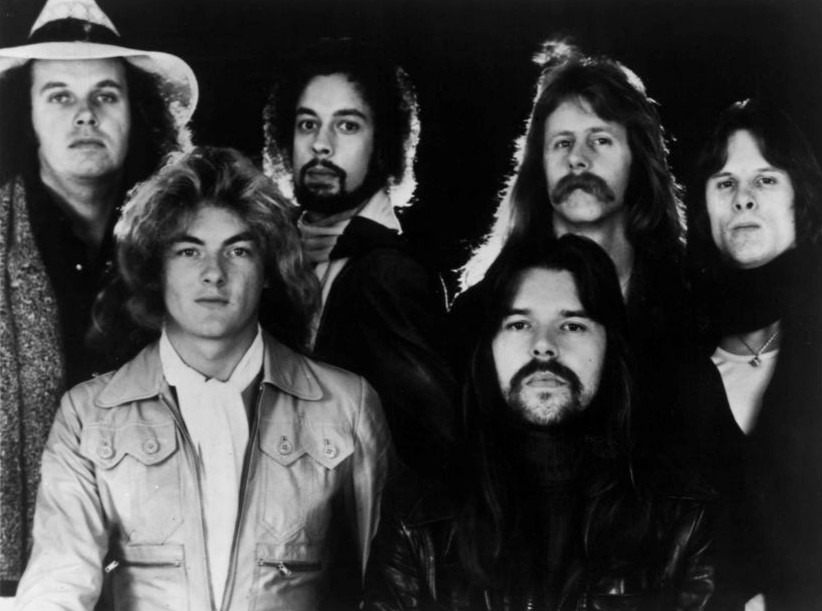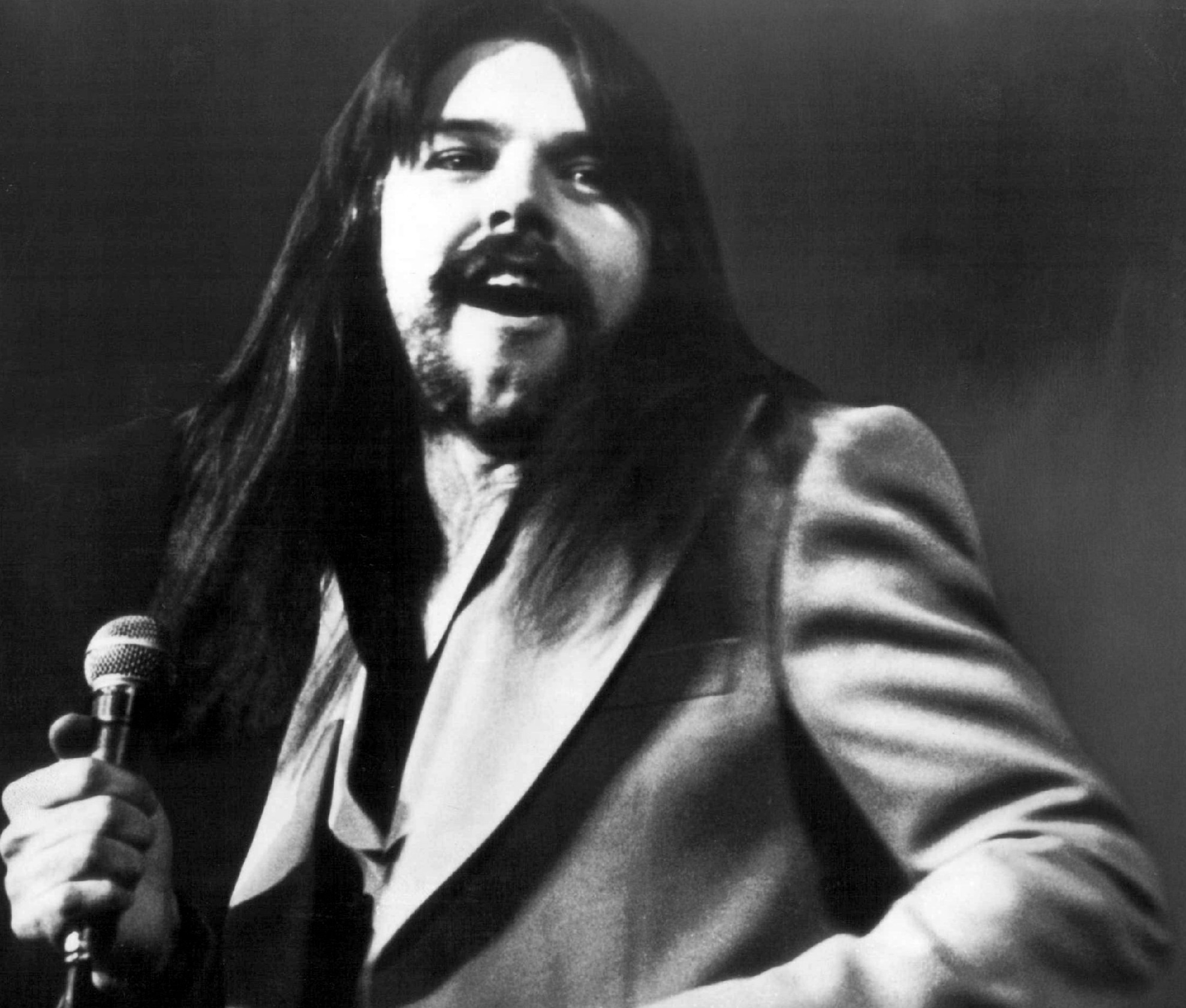Bob Seger evolved from being one of the hard-rockin’ musicians into one of the pillars of what is called “heartland rock” – the type of rock subgenre that has a straightforward style, and touches more on emotional and social issues rather than just entertaining the audience, just like the other forms of classic rock. He has had a long career that has spanned five decades, several platinum albums, and a Rock and Roll Hall of Fame under his belt. He started to achieve commercial success during the 70s music scene. For oldies music fans in particular who lived during that time, Bob Seger was certainly a big name.
Seger’s Early Life and Start in Music – Jumping from One Band to the Next
Seger was born Robert Clark Seger on May 6, 1945 in Lincoln Park, Michigan. His family moved to the nearby city of Ann Arbor. Among his earliest musical inspirations were Little Richard and Elvis Presley, like most kids at that time.
He started pursuing music in 1961, fronting the trio the Decibels, who were based in Detroit, Michigan. One of the members of the group was Eddie “Punch” Andrews who would become Seger’s manager. After the Decibles, he moved back to Ann Arbor and joined The Town Criers. Seger then joined another band, Doug Brown and the Omens as vocalist and keyboardist – the band later recorded a song called “Ballad of The Yellow Beret,” which was their parody of Barry Sadler’s song, “Ballad of The Green Beret.” After receiving threats from Sadler himself to sue the band, the song was never released as was originally planned.
Seger’s Solo Career
Seger started to pursue a solo singing career in the mid-1960s, releasing his first single “East Side Story” – it became a local hit. He formed a short-lived label, Cameo Records, where he continued to release a few more singles such as “Persecution Smith” and “Heavy Music” until the imprint folded. He formed his first own group, Bob Seger & The Last Heard, who released “Heavy Music” that later became his first charting single, peaking at #103 on the national charts in 1967.
Later Struggles
The following year, Seger formed another band, Bob Seger System and released his first album Ramblin’ Gamblin’ Man, on Capitol Records. The album’s title track also became a single – it provided Seger with his first big hit, peaking at #17 on the Hot 100 that year. However, the group’s follow-up, Noah, sold poorly, so Seger withdrew from music for a while to attend college.
In 1970 Seger returned, along with a group of backing musicians, and released Mongrel, which also failed to follow up the success of Ramblin’ Gamblin’ Man. As well, his following releases – Brand New Morning, Smokin’ O.P.’s, Back in ’72, and Seven – failed to register high on the charts. Seger returned to Capitol Records to work on his next LP, Beautiful Loser along with his new group the Silver Bullet Band. While it wasn’t a hit when it was first released, Beautiful Loser eventually gained fans across the country (over the years, it eventually went double platinum).

Catapulting to Success and Mainstream Fame
1976’s Live Bullet was recorded by Seger and the Silver Bullet Band at Cobo Hall in Detroit, Michigan which was then considered one of the most esteemed concert venues. It became a big hit, eventually going to quadruple platinum. Most importantly, the success of Live Bullet catapulted Seger to mainstream fame.
The follow-up Night Moves (1976) became a huge success, going multi-platinum; its title track went to #4 on the Hot 100 singles chart that same year. The subsequent album Stranger In Town also became a multi-platinum success, yielding four singles that became Top 40 hits: “Still The Same” (at #4), “Hollywood Nights” (at #12), “We’ve Got Tonight” (at #13) and “Old Time Rock and Roll” (at #28). Seger and his Silver Bullet Band’s 1980 album Against The Wind also got a multi-platinum status producing two Top 10 hits “Fire Lake” and the title track
Bob Seger and The Silver Bullet Band continued their multi-platinum success with another live album Nine Tonight, also recorded at Cobo Hall in 1980. It also became a huge success. Band members included:
- Bob Seger (Lead Vocals, Guitar, Piano): The frontman and primary songwriter, Seger’s distinctive voice and heartland rock style have been the defining features of the band. He has been the constant member since the band’s formation.
- Drew Abbott (Guitar): Abbott was the band’s lead guitarist during their peak years in the 1970s and 1980s. He played on many of their most successful albums before departing in 1983.
- Alto Reed (Saxophone): A long-time member, Reed’s saxophone was a signature element of the band’s sound. He joined at the band’s inception and remained a key member until his passing in 2020.
- Chris Campbell (Bass Guitar): Campbell has been with the Silver Bullet Band almost since its beginning and has been a mainstay on bass.
- Charlie Martin (Drums): Martin was the band’s drummer during its early years, contributing to several of their key albums in the 1970s.
- Craig Frost (Keyboards): Joining in 1979, Frost became an important part of the band’s sound, providing keyboards and synthesizer work.
- Robyn Robbins (Keyboards): A member during the 1970s, Robbins’ keyboard work was featured on several of the band’s albums during this period.
- David Teegarden (Drums, Percussion): Teegarden joined in the early 1980s and played on several albums and tours.
- Rick Manasa (Keyboards): Manasa was a member during the early years of the band and contributed to their sound with his keyboard playing.
Over the years, other musicians have contributed to the band either in studio recordings or during live performances. The Silver Bullet Band is known for its blend of rock, pop, and heartland rock, with Seger’s songwriting and vocals at the forefront. Their music has resonated with fans for its relatable themes and straightforward rock sound.
More Gold and Platinum Releases
Seger came out with another studio effort, The Distance in 1982. A bit of tension was growing within the Silver Bullet Band as the recording of the album had also employed session musicians – the first time Seger did this since Seven days. Frustrated, Silver Bullet’s guitarist Drew Abbott quit. Since then the band’s lineup has been undergoing frequent changes. The album did well (peaking at #5 on the Billboard 200 chart; its single “Shame On The Moon” went to #2 on the Hot 100 and #1 on the adult contemporary charts) but not as spectacularly as the previous efforts did – a signal that Seger’s popularity was starting to ebb down. Subsequent releases Like A Rock (1986) and The Fire Inside (1991) also went platinum, but It’s A Mystery (1995) was the first album in years that didn’t make it to the platinum mark, ending up with a gold finish. Seger’s single “Shakedown” was featured on Beverly Hills Cop II motion picture soundtrack, and went to #1, his only chart-topping single on the Hot 100 to date.
Bob Seger, both as a solo artist and with the Silver Bullet Band, has had a successful career with a number of hit songs. His music, characterized by its classic heartland rock sound, resonates with themes of love, heartache, and the American experience. Here are some of Bob Seger’s biggest solo career hits:
- “Night Moves” (1976): The title track of his 1976 album, “Night Moves” is one of Seger’s most iconic songs, known for its nostalgic lyrics and reflective tone.
- “Turn the Page” (1973): Originally released on the “Back in ’72” album and later live versions, this song became one of Seger’s most famous tracks, depicting the weary life of a touring musician.
- “Against the Wind” (1980): The title track from the album of the same name, this song speaks to the challenges of growing older and was a significant commercial success.
- “Hollywood Nights” (1978): From his album “Stranger in Town,” this up-tempo song reflects Seger’s experiences in California, blending a driving beat with vivid storytelling.
- “Still the Same” (1978): Also from “Stranger in Town,” this track showcases Seger’s talent for crafting songs about complex characters and situations.
- “Old Time Rock and Roll” (1978): Another hit from “Stranger in Town,” this song became a staple of classic rock radio and was famously featured in the film “Risky Business.”
- “Mainstreet” (1976): Featured on the “Night Moves” album, this song is a nostalgic look back at Seger’s youth in Ann Arbor, Michigan.
- “We’ve Got Tonight” (1978): From the album “Stranger in Town,” this ballad showcases a softer side of Seger’s music and has been covered by several other artists.
- “Like a Rock” (1986): The title track from his 1986 album, it’s known for its powerful lyrics and was later used in a long-running Chevrolet trucks ad campaign.
- “You’ll Accomp’ny Me” (1980): A hit from the “Against the Wind” album, this song combines a romantic theme with a catchy, uplifting melody.
Bob Seger’s hits are characterized by their storytelling, relatable themes, and the blend of rock with a touch of soul and country. His songs have become classics of American rock music and continue to enjoy popularity and radio play.
Still Going Strong
Bob Seger has continued to make significant contributions to the music industry, albeit at a more relaxed pace compared to his heyday. Here are some key highlights of his activities since 2000:
- Album Releases: Seger has released several albums in the 21st century. In 2006, he came out with “Face the Promise,” his first new studio album in 11 years. This was followed by “Ride Out” in 2014 and “I Knew You When” in 2017. These albums include both original songs and covers, and they reflect Seger’s enduring talent as a songwriter and musician.
- Touring: Despite reducing the frequency of his performances, Seger has continued to tour, often with The Silver Bullet Band. His tours generally receive positive reviews and are popular with fans who appreciate his classic hits as well as new material.
- Induction into the Songwriters Hall of Fame: In 2012, Seger was inducted into the Songwriters Hall of Fame, a fitting tribute to his significant contributions as a songwriter over his lengthy career.
- Collaborations and Contributions: Seger has collaborated with other artists and contributed to various projects. For instance, he worked with Kid Rock on the song “Collide.”
- Health and Personal Life: In recent years, Seger has dealt with some health issues. For example, in 2017, he postponed several tour dates due to a spinal condition requiring surgery. However, he recovered and resumed touring.
- Public Appearances and Interviews: Seger has made various public appearances and given interviews, sharing insights about his career, his views on the music industry, and reflecting on his legacy.
- Legacy and Influence: Seger has continued to influence new generations of musicians and songwriters. His classic songs remain staples on classic rock radio, and he is often cited as an influence by other artists in rock and country music.
- Retirement Speculations: In recent years, there have been speculations about Seger’s retirement, especially considering his age and the physical demands of touring. However, as of my last update in April 2023, he has not officially announced retirement.
Among the awards Bob Seger has received is being inducted into the Rock and Roll Hall of Fame in 2004; Songwriter’s Hall of Fame in 2012; a Grammy Award for Best Rock Vocal Performance by a Duo or Group for his performance in the song “Against The Wind” in 1981, as well as several nominations. Seger, nearing his 70’s, still records and performs today.


